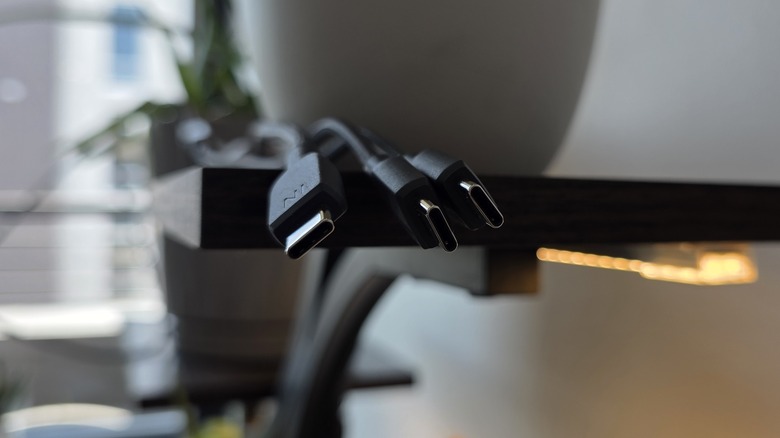USB-C is ubiquitous by now, thanks to its support for high-speed data transfer, charging, and even video output. One cable to rule them all and in interoperability bind them, even though it can be hard to tell the difference between USB-C cables with different capabilities. But what does the “C” actually stand for? A number of conflicting answers abound. Some claim it stands for “charging” or “connectivity,” while others believe that it refers to the rounded shape of the connector, which vaguely resembles the letter if it were elongated. Alas, however plausible they may sound, none of those explanations is true.
The “C” in USB-C refers to the plug and receptacle type, which is the third main type of connector in the history of USB. There was USB Type-A, then USB Type-B, and now we have USB Type-C. It’s as simple as one, two, three. These names were assigned by the USB Implementers Forum (USB-IF), a consortium of tech companies that administers specifications for the standard.
However, if you actually take the time to count different USB connectors over the years, you’ll realize things aren’t so straightforward. Despite its name, USB-C isn’t exactly the third type of USB receptacle ever released. Perhaps this fact explains why so many people assume the “C” stands for something else. Read ahead as we break it all down.
A history of USB connectors
If you’ve owned a number of gadgets over the years, you probably know there are far more than just three types of USB connectors. USB Type-A — the slim, rectangular connector — is still found on many laptops and desktop PCs. Then there’s USB Type-B, the six-sided connector that looks like a square with two of its corners cut off. You’ve probably seen these on printers, audio gear, and other computer peripherals. Type-B connectors changed between USB 2.0 and 3.0, with a taller plug that looked like a small square stacked on top of a larger one. But even if we don’t count that update, USB-C still isn’t the third type of USB connector.
If you once owned a non-iPod music player, a point-and-shoot digital camera, or even a cheap modern-day USB gadget, you’ll remember the tiny USB Mini and USB Micro ports they often featured. Their existence makes USB Type-C the fifth connector in the USB lineage, not even counting further revisions. Perhaps the USB-IF considers Mini and Micro to be spin-offs, like how “Star Wars” TV shows are to the mainline movie franchise.
With that said, USB naming has always been confusing. Take USB 3.0 SuperSpeed ports, which expanded over the years to include various iterations, including USB 3.2 Gen 2×2. In that context, USB-C is simply another addition to the pile of confusingly named USB standards.
Source link




